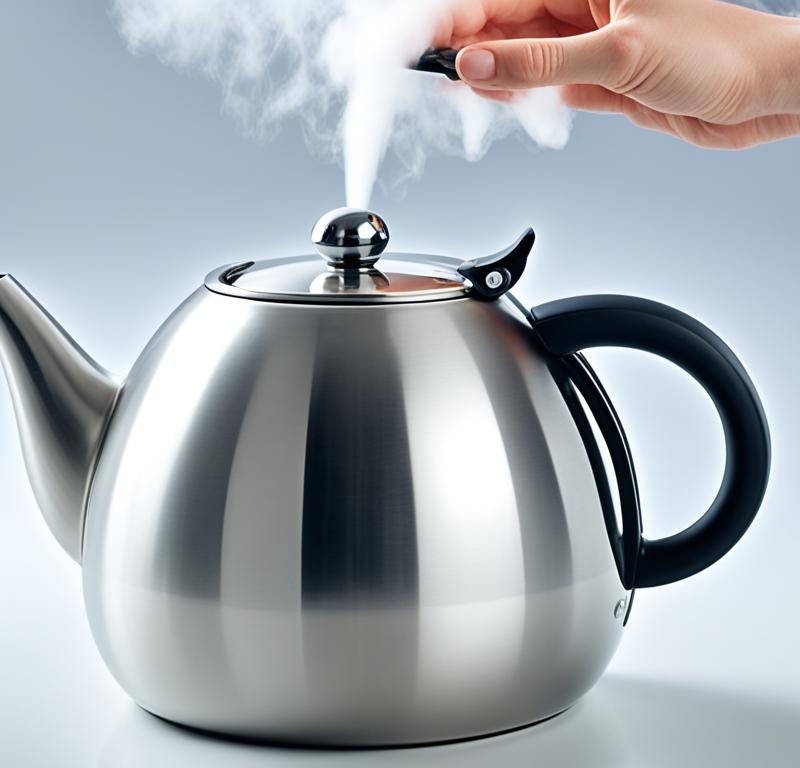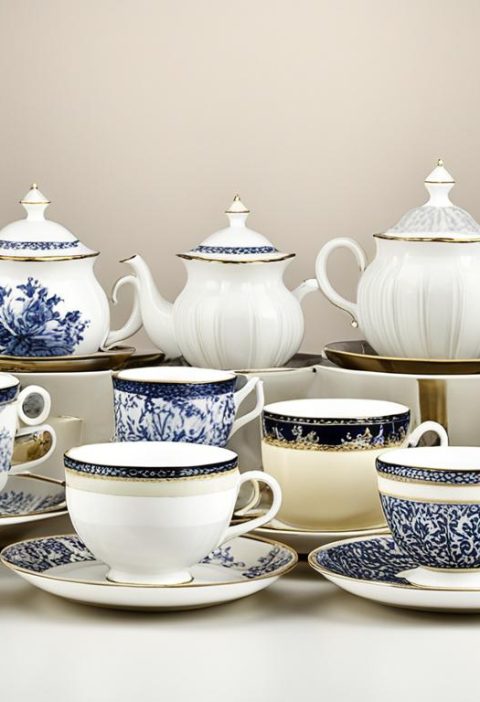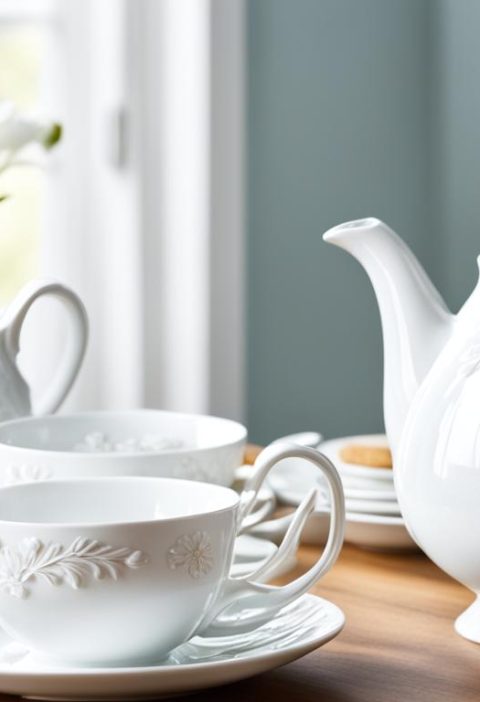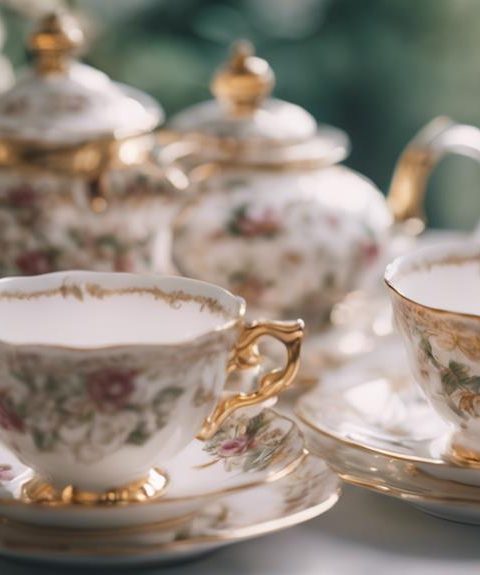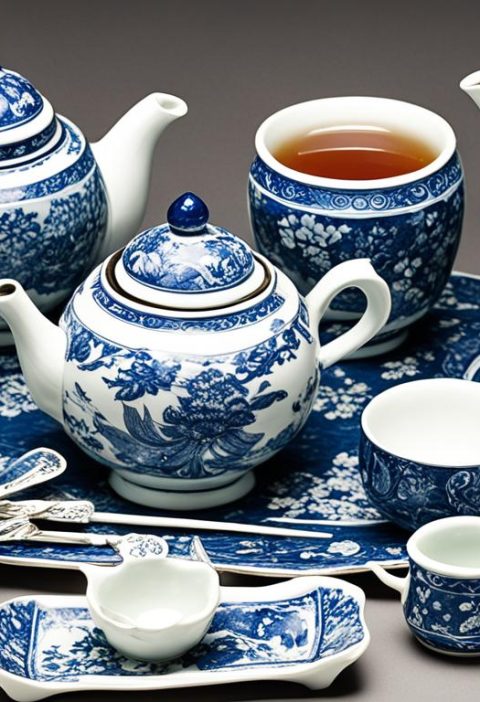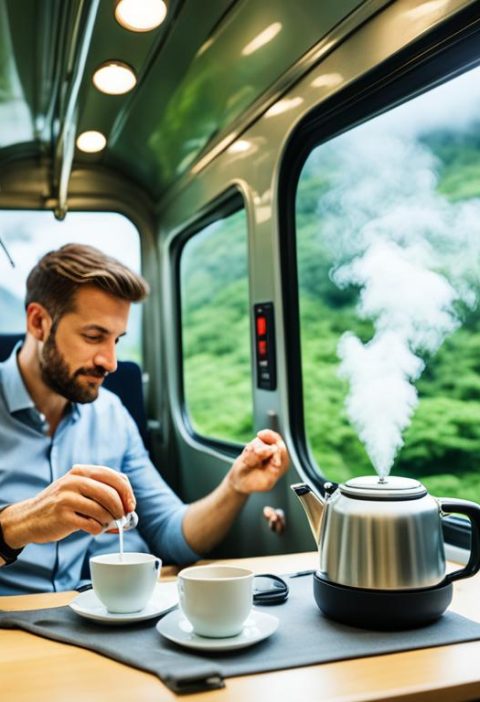The material of your teapot affects how well it keeps heat when you make tea. This influences the temperature of the tea. For example, clay teapots, especially those made from Yixing clay, keep heat really well. They also spread heat evenly. On the other hand, glass teapots don’t keep heat as long but look nice. They are good for teas that don’t need very hot water for brewing. When you pick a teapot material, think about the tea type and what you like.
Key Takeaways:
- Teapot material significantly affects heat retention during tea brewing.
- Clay teapots, like Yixing clay, have excellent heat retention and even heat distribution.
- Glass teapots offer visual appeal but have lower heat retaining capabilities.
- Consider the type of tea and personal preference when choosing a teapot material.
The Impact of Tea Leaf Quantity on Tea Flavor
The number of tea leaves you use changes how your tea tastes. Fewer leaves make a lighter flavor, good for white or green teas. But, more leaves make a strong flavor, perfect for black or oolong teas.
To get the right flavor, you need the best amount of leaves and water for each tea. Here are the suggested amounts for each:
| Tea Type | Brewing Ratio (Tea Leaves : Water) |
|---|---|
| Green Tea | 2-3 grams per 100ml of water |
| Black Tea | 2-3 grams per 100ml of water |
| Oolong Tea | 5 grams per 100ml of water |
Start with these amounts but change them to match your taste. Play around with the leaf amounts to find what you like.
Frequently Asked Questions
Q: How does tea leaf quantity affect the flavor of tea?
More or fewer leaves change the taste of your tea. Fewer leaves give a light flavor, while more leaves offer a strong taste.
Q: What is the ideal brewing ratio for green and black teas?
The perfect ratio for green and black tea is 2 to 3 grams of leaves for every 100ml of water. You can change this to fit your taste.
Q: How much tea should I use to brew oolong tea?
For oolong tea, start with 5 grams of leaves for every 100ml of water to find a great taste.
Q: Can I adjust the brewing ratio to suit my taste?
Yes, you can! The given ratios are a guide. Change the amount of tea leaves to get the taste you want.
The Role of Water Temperature in Tea Brewing
The right water temperature makes a big difference when you brew tea. Each type of tea needs a different temperature to get its best taste. For example, green tea, black tea, and oolong tea taste best with water at certain temperatures. Here’s a quick guide:
| Tea Type | Water Temperature |
|---|---|
| Green Tea | 50-80°C (122-176°F) |
| Black Tea | 90-100°C (194-212°F) |
| Oolong Tea | 85-95°C (185-203°F) |
Green tea needs cooler water, around 50-80°C, to keep from getting too bitter. This lower heat lets its gentle taste shine without the sharpness.
Black tea is tougher and loves heat from 90-100°C. High heat brings out its bold taste and smell, giving you a full experience.
Oolong tea prefers something in the middle, about 85-95°C. This warmth brings out its balanced and complex flavor.
To brew green or oolong tea, always cool boiling water first. This step keeps the tea from getting too bitter. The right water temperature is essential for a great cup of tea.
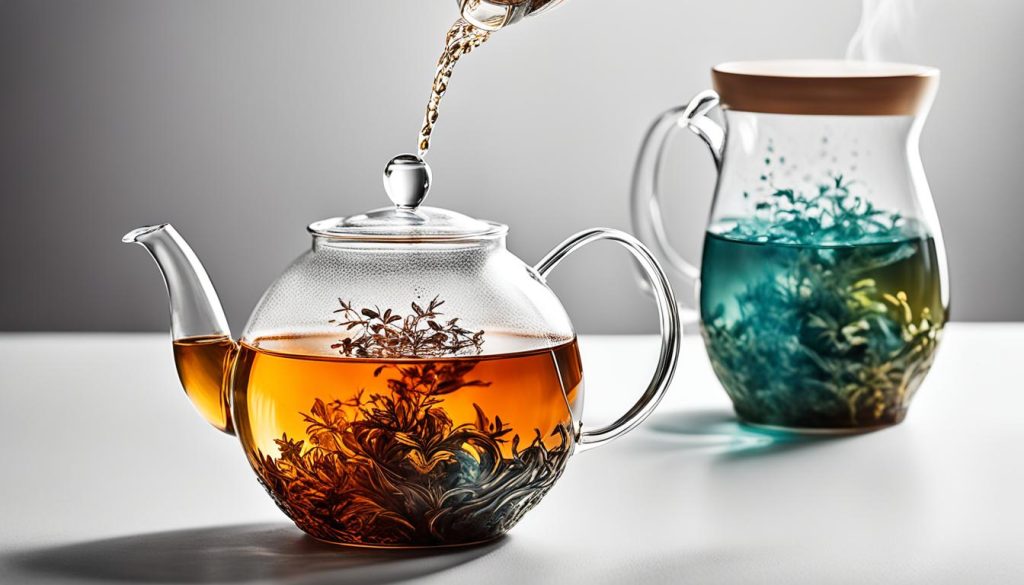
Frequently Asked Questions about Water Temperature for Tea:
Q: Can I use boiling water for green tea?
Boiling water is too hot for green tea and can make it bitter. Let your water cool to 50-80°C before adding the leaves.
Q: Can I use cooler water for black tea?
Cooler water makes black tea lighter and less bold. But if that’s how you like it, experiment with lower temperatures.
Q: How do I achieve the right water temperature without a thermometer?
If you don’t have a thermometer, let boiling water sit for a few minutes. This works well for green and oolong teas. For black tea, boiling water straight pout is fine.
Q: Can I use the same water temperature for all types of tea?
For the best taste, each tea type needs its own specific water temperature. This helps bring out the special flavors in every tea.
Q: Does water temperature affect tea brewing time?
Definitely. Higher temperatures mean shorter brewing times, and lower temperatures need longer. Follow the tea’s instructions to get the perfect brew
- Keyword: water temperature for green tea
- Keyword: water temperature for black tea
- Keyword: water temperature for oolong tea
The Balance of Water Quantity in Tea Brewing
Finding the right balance between water and tea leaves is key for a great cup of tea. The water amount changes how strong or mild the tea tastes. More water means a weaker flavor. Less water makes the tea taste stronger. It’s vital to adjust the water amount to match the tea type and your liking.
Getting the water-to-tea ratio right is critical. A good start is to use 2 grams of tea for every 8 ounces of water. This can be tweaked to fit your taste. For a stronger taste, add more tea or use less water. Or, if you want it milder, reduce the tea amount or add more water.
Trying and adjusting the ratio to your taste is a fun part of making tea. You can tune the flavor by changing the water and tea amounts a bit. Look out for how the tea smells and tastes as you do this. Then, you’ll remember what works best for next time.
Common Questions About Water Quantity in Tea Brewing
1. How does water quantity affect the taste of tea?
Water amount directly impacts the tea’s strength and flavor. More water makes it milder; less water makes it stronger.
2. Can I use more tea leaves to compensate for less water?
Absolutely. Adding more tea to less water keeps the flavor strong without changing the concentration.
3. What is the recommended water-to-tea ratio for brewing tea?
Starting with 2 grams of tea for every 8 ounces of water is a good base. But, feel free to change this to suit your taste and tea type.
4. How can I adjust the water-to-tea ratio to make a milder tea?
If a milder tea is what you like, use more water or fewer tea leaves. This thins out the tea’s strength.
5. How can I adjust the water-to-tea ratio to make a stronger tea?
For a stronger tea, use less water or more tea leaves. This boosts the tea’s taste without changing the volume much.
| Milder Tea | Stronger Tea | |
|---|---|---|
| More Water | Use a larger volume of water and the recommended amount of tea leaves. | Use a larger volume of water and increase the amount of tea leaves. |
| Less Water | Use a smaller volume of water and the recommended amount of tea leaves. | Use a smaller volume of water and decrease the amount of tea leaves. |
When figuring out the best water-to-tea ratio, consider your tea type and what you like. This way, you’ll get the perfect strength for you. Remember, tweaking the tea and water amounts is the way to make your ideal cup.
Conclusion
The kind of teapot you choose and how much tea, water temperature, and quantity you use all affect your tea’s taste. If you learn about these factors, you can brew tea that matches what you like.
Trying out different things and paying attention to what you like is important. Use different teapots, like clay or glass, to see how they keep heat. Change the amount of tea to make it stronger or weaker. Remember, the right water temperature brings out the best in every type of tea. Find the right amount of water to make it just as you prefer.
There’s no single best way to make tea. It’s about what makes your tea taste great. Take the time to play around and find your ideal combination. With some trial and error, you’ll soon have the perfect tea just for you.
